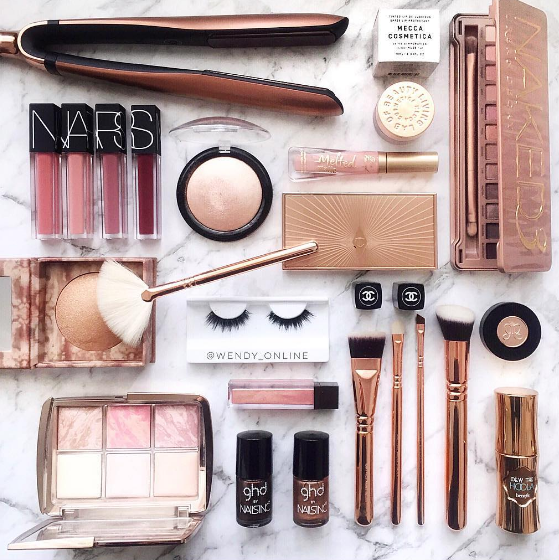STYLE
Beauty
Did you know that makeup can expire?

Makeup is one of those things that's fun to use and equally as fun to collect. Having a stacked makeup collection with pristine drawers and trays of lipsticks, highlighters and eyeliners brings a certain sense of pride, don'tcha think? That is, if all that makeup isn't past its expiration date.
It seems silly for makeup to even have an expiration date (it's not milk, after all) but even still, these dates are important to follow. You can find the expiration date on the product itself, and it usually looks like this. The number inside tells you how long after the purchase date you should keep and use the product. Studies have shown that makeup carries a lot of yucky bacteria, and you may need to be throwing out your makeup more often than you think. Here's how long you should use your products before tossing.
Every month: Makeup sponge/applicator.
By "applicator," we are not referring to makeup brushes. Here, we're talking about sponges. It should come as no surprise that sponges hold a lot of bacteria—especially the ones we use on our faces. Even if you wash your Beauty Blender or triangle sponge after each use, it still collects germs. Using a germy sponge on your face can clog your pores and cause you to breakout.
Every 3 months: Liquid/gel eyeliners and mascara.
It's more than likely that your liquid eye makeup will dry out after three months, making them unusable. But if not, give them the boot anyway. We know these things can be expensive, but protecting your eyes from infection is worth the extra $20 every few months.
Every 12 months: Lipsticks and foundation.
When a lipstick is expired, it's fairly easy to tell. The same can be said of foundation. Lipstick usually changes color slightly, and can smell or taste a bit weird. Foundation will sometimes separate, or get a bit chunky.
Every 12-18 months: Creams, such as eyeshadow, bronzer, blush and concealer.
Unsurprisingly, creams can dry up—even if they feel fine to the touch, the application will not be as smooth as it once was. Plus, creams are typically products that we apply using our fingers. Fingers = germs. So if you've been holding onto the same makeup book for a year or more, maybe it's time to move on.
Every 18-24 months: Pencil eyeliners and lip gloss.
Every time you put on lip gloss, the bacteria from your mouth gets transferred onto the applicator. Pencil eyeliners can carry as much bacteria as mascara and liquid eyeliners, but they have a longer shelf life because sharpening them gets rid of some of the yucky stuff they accumulate.
Two years or more: Powders, such as eyeshadow, bronzer and blush; makeup brushes.
Unless broken and crumbly, these are safe to keep for a quite a while. Makeup brushes—*if* you clean them thoroughly and regularly—shouldn't carry bacteria. If the bristles begin to fray, though, kick 'em to the curb.
Do you any tips on lengthening the life of your makeup? Let us know in the comments!
Photo credit: Wendy Nguyen

 become a contributor
become a contributor













.png)




